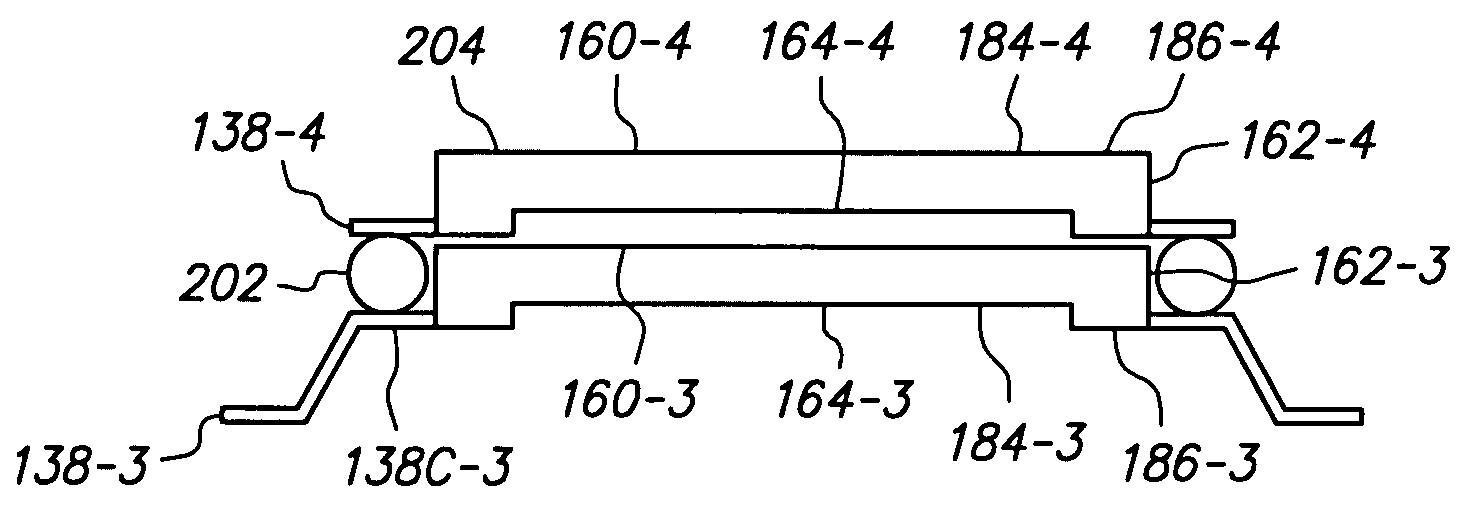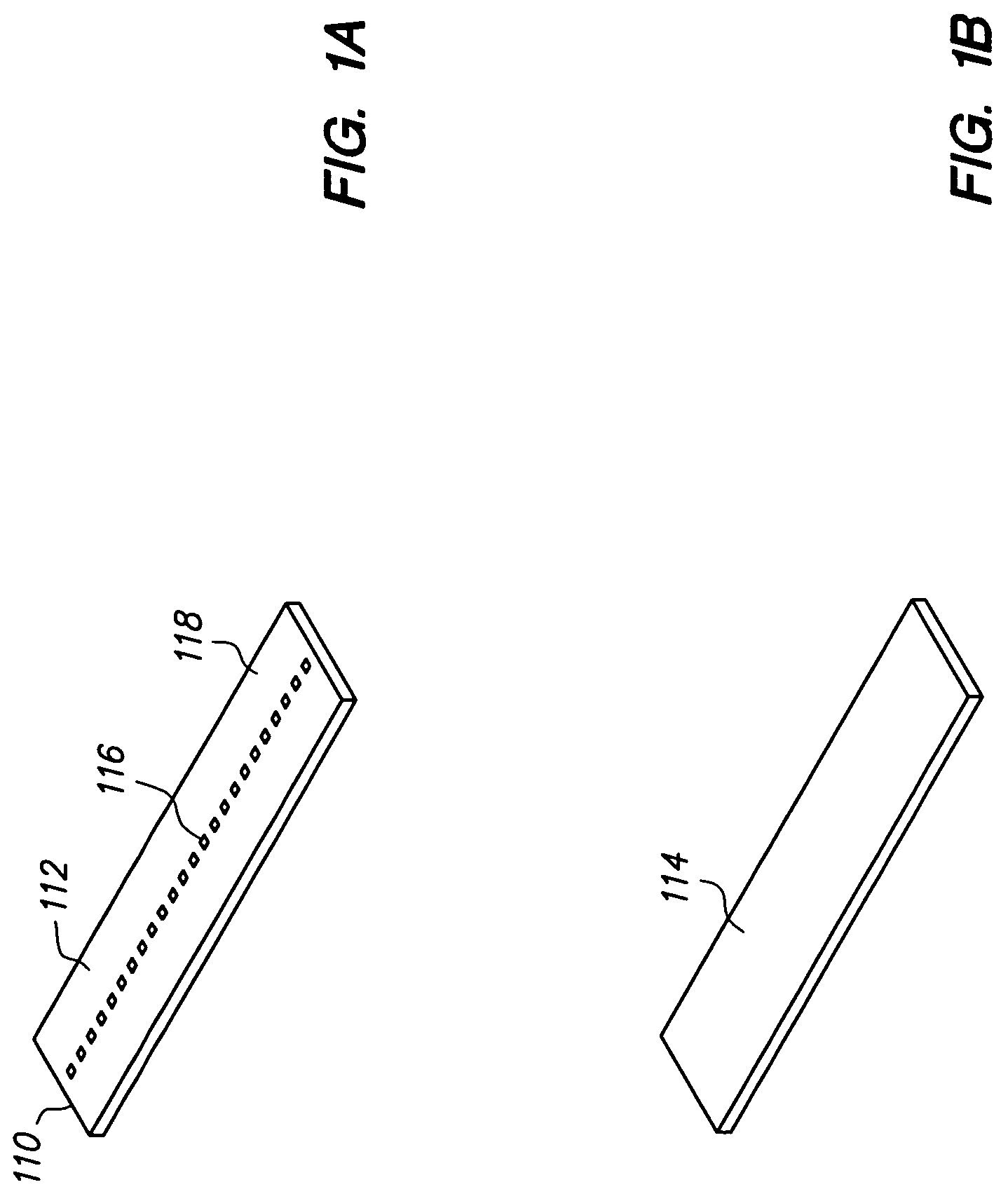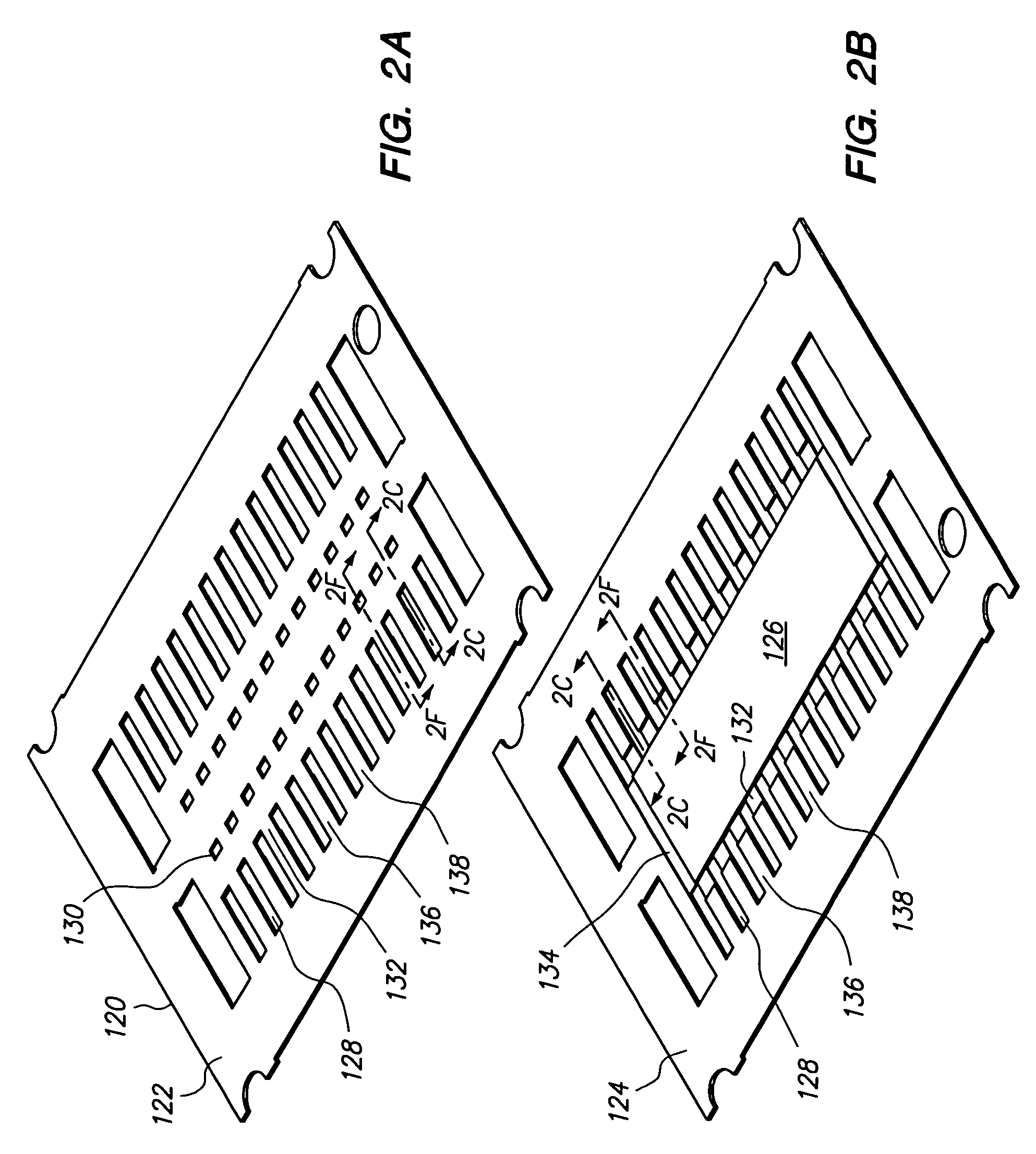Three-dimensional stacked semiconductor package device with bent and flat leads and method of making same
a semiconductor and package technology, applied in semiconductor devices, semiconductor/solid-state device details, electrical apparatus, etc., can solve the problems of defect density control, optical system resolution limit, and limited availability of processing material and equipment, so as to improve the efficiency of manufacturing and reduce the size of features. , the effect of convenient manufacturing
- Summary
- Abstract
- Description
- Claims
- Application Information
AI Technical Summary
Benefits of technology
Problems solved by technology
Method used
Image
Examples
Embodiment Construction
[0068]FIGS. 1A–18A and 1B–18B are top and bottom perspective views, respectively, of a method of making a three-dimensional stacked semiconductor package device in accordance with an embodiment of the present invention.
[0069]FIGS. 1A and 1B are top and bottom perspective views, respectively, of semiconductor chip 110 which is an integrated circuit in which various transistors, circuits, interconnect lines and the like are formed (not shown). Chip 110 includes opposing major surfaces 112 and 114 and has a thickness of 200 microns between these surfaces. Surface 112 is an upper surface, and surface 114 is a lower surface. Surface 112 is the active surface and includes conductive pads 116 arranged in a single row and passivation layer 118. Pads 116 are substantially aligned with passivation layer 118 so that surface 112 is essentially flat. Alternatively, if desired, pads 116 can extend above or be recessed below passivation layer 118. Pads 116 provide bonding sites to electrically cou...
PUM
 Login to View More
Login to View More Abstract
Description
Claims
Application Information
 Login to View More
Login to View More - R&D
- Intellectual Property
- Life Sciences
- Materials
- Tech Scout
- Unparalleled Data Quality
- Higher Quality Content
- 60% Fewer Hallucinations
Browse by: Latest US Patents, China's latest patents, Technical Efficacy Thesaurus, Application Domain, Technology Topic, Popular Technical Reports.
© 2025 PatSnap. All rights reserved.Legal|Privacy policy|Modern Slavery Act Transparency Statement|Sitemap|About US| Contact US: help@patsnap.com



